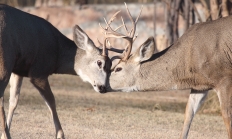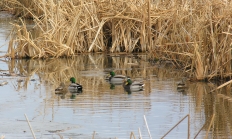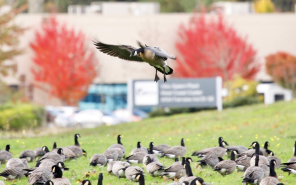
Search myodfw.com



EASTERN OREGON December 4, 2025 Currently open Upland: Eurasian collared dove, ruffed and blue grouse, rooster pheasant, chukar/ Hungarian partridge, quail, *fall turkey (*Check regulations for specific units and boundaries) Duck, scaup, Wilson's snipe, crow, brant, Mid-Columbia zone - Canada, white fronted and white goose Zone 1 Mourning Dove Upcoming Season High desert & Blue Mountain zones – Canada goose (Opens Dec 9) Announcements, resources A district-by-district look at how this year's migratory and upland bird seasons are shaping up. 2025-26 Game Bird Hunting Forecast Hunt by Reservation Program - ODFW's Hunt by Reservation Program connects bird hunters with private
As with all types of hunting, it’s important to choose the right kind of clothing for turkey hunting. Early in the spring turkey season, conditions can be very cold and wet compared to later in the season. At the same time, higher elevations may be colder than the valley floors. The fall turkey hunting season also offers a wide-range of weather conditions, in a variety of places. The weather in October can be very different than conditions in late December. This means proper clothing is important no matter what time of year or where in the state you’re hunting. Layer

Western Oregon Dec 4, 2025 Currently open Duck & coot, Wilson's snipe, crow, brant, Canada, white-fronted & white goose Upland – Ruffed & blue grouse, chukar and Hungarian partridge, rooster pheasant, quail (mountain & CA), fall turkey (WMU's 14-30), mourning dove Permits required for: band-tailed pigeons and sea ducks. For more information on permits. Announcements, resources A district-by-district look at how this year's migratory and upland bird seasons are shaping up. 2025-26 Game Bird Hunting Forecast Hunt by Reservation Program - ODFW's Hunt by Reservation Program connects bird hunters with private landowners. By making a reservation online, hunters receive a

SOUTH CENTRAL BIG GAME HUNTING December 4, 2025 Above average snowpack in higher elevations coupled with a low snowpack on winter range bodes well for a great year of antler growth and fawn/calf survival in Lake and Klamath counties. Significant snowpack helped offset a dry spring and early summer. Mild temperatures and late summer rains have us looking forward to an excellent upcoming big game season. Fire areas in recent years have begun to recover and recruitment for deer and elk is up from prior years. Open seasons Fall bear, cougar ( Check current harvest numbers), coyote https://www.eregulations.com/oregon/hunting/elk-seasons Announcements, resources
SW BIG GAME HUNTING December 4, 2025 Currently open Fall bear, Cougar ( check current harvest numbers), Coyote, Deer and Elk ( Check regulations for specific dates and units) Announcements, resources 2025 Big Game Hunting Forecast Big game harvest statistics - You'll find links to population, harvest and point summary reports that can help you decide what hunts to apply for next season. Please report elk with hoof disease - If you see elk showing signs of elk hoof disease, including lame or limping elk or elk with damaged, injured, missing or deformed hooves, please report it using this online


A box calls is the most popular turkey call, and is a good choice for new turkey hunters. Box calls not only are easy to use, but they can sound very realistic. A box call can create a wide range of yelps, clucks, purrs, fighting purrs, cackles and gobbles. If you can get yelps, clucks and purrs to sound good on a box call, you’ll routinely bring in birds. Parts of a box call Box calls come in two parts – a narrow rectangular box with a paddle attached at one end. Attached with a single screw in the center



Jackson Cooperative Travel Management Area – updated map available, added acreage, and new landowner participation
Central Point, Ore. – Hunters and recreationists who plan to use the Jackson Cooperative Travel Management Area (TMA) should download the newest version of the georeferenced .pdf map. updated on Oct. 14. There have been major changes this year, so users should double check where they plan to access…
Officials urge public to avoid contact with sick or dead birds as avian flu persists across Oregon
SALEM, Ore. – People across Oregon are being urged to avoid contact with sick or dead birds as highly pathogenic avian influenza (HPAI) continues to impact wild and domestic bird populations across the state. There is currently no effective treatment for wild and domestic birds, and the virus can…

Find the weekly statistics for waterfowl and upland game birds at Fern Ridge Wildlife Area.
Chris Kern, Region Manager Fisher research in southern Oregon Fisher are a Species of Greatest Conservaion Need in Oregon's State Wildlife Action Plan, and ODFW is actively conducting research to understand fisher occupancy and distribution east of I-5, as well as that of their competitors and predators. Wildlife Research staff maintained 30 baited camera traps in the Cascade-Siskiyou National Monument and Southern Cascades. The cameras were deployed in mid-September on U.S. Forest Service and Bureau of Land Management lands in areas with proposed habitat management efforts. The goal is to evaluate how these land alterations influence changes in mesocarnivore occupancy

